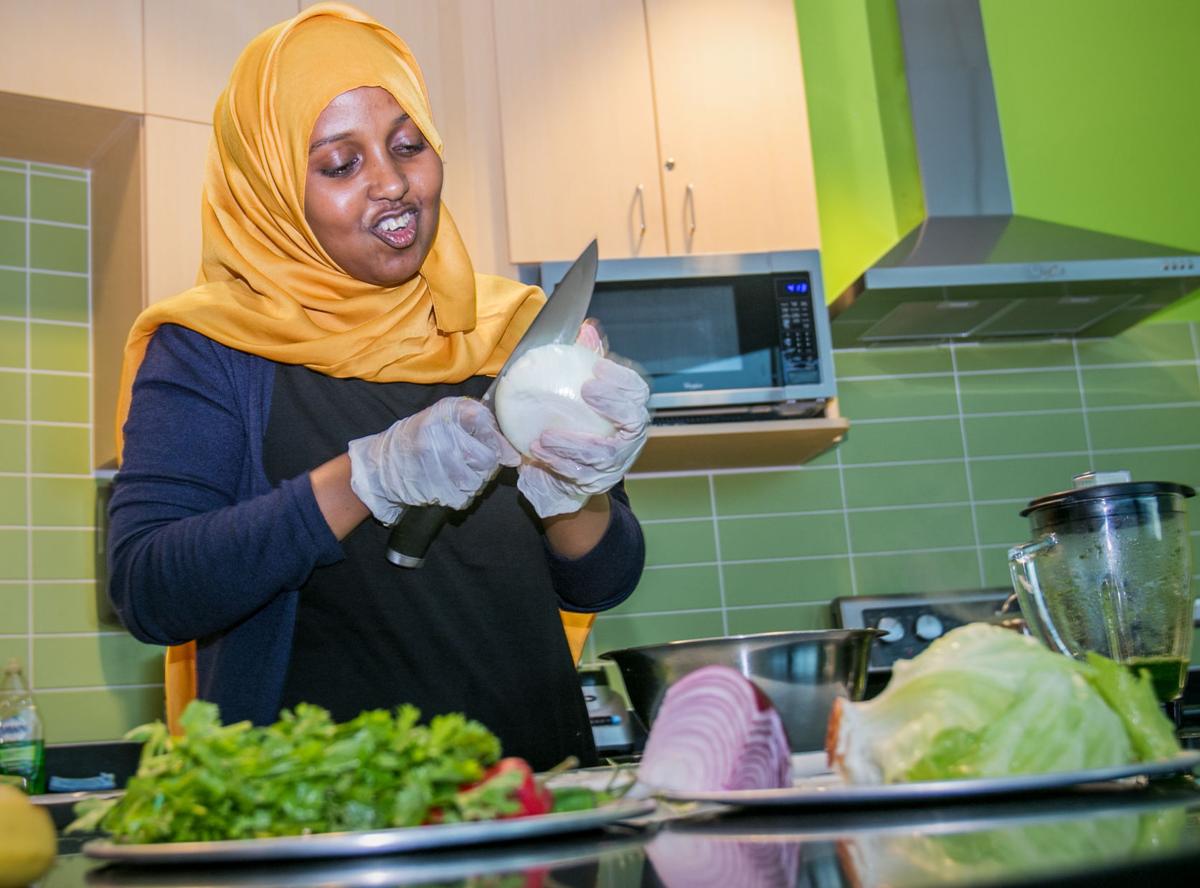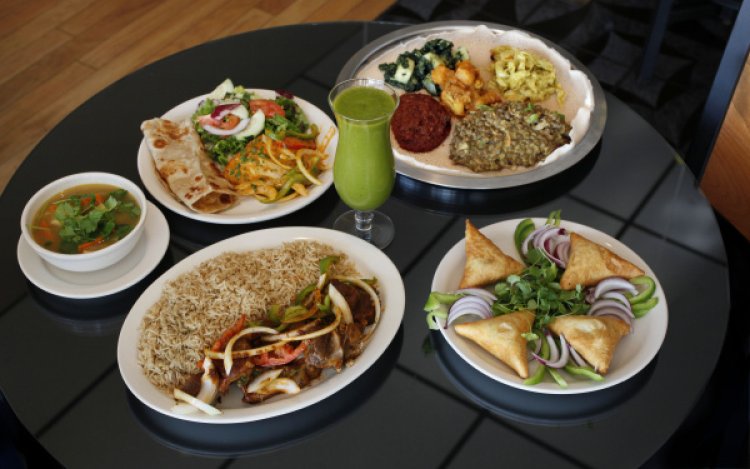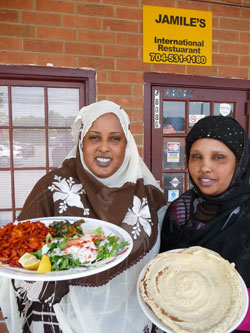Exploring the Abundant Flavors and Cultural Traditions of Genuine Somali Food: A Comprehensive Guide to Somali Food
Do you recognize that Somali cuisine is a surprise treasure waiting to be discovered? In "Discovering the Abundant Flavors and Cultural Customs of Genuine Somali Cuisine: A Comprehensive Overview to Somali Food," you will get started on a trip to discover the vibrant flavors and social heritage of Somali cuisine. This detailed overview will take you through the origins of Somali cuisine, the essential ingredients used in Somali cooking, and conventional dishes that will certainly tantalize your preference buds. You will likewise discover the different impacts that have shaped Somali food and the significant function that food plays in Somali society. Prepare to expand your culinary horizons and explore the rich tapestry of Somali cuisine.
The Beginnings of Somali Food
Among the key elements of understanding Somali cuisine is diving into the rich background and origins of this tasty cooking custom. Somali cuisine is a reflection of the country's diverse social influences, consisting of Arab, Persian, Indian, and African. The beginnings of Somali food can be traced back to ancient times when Somali individuals relied upon a nomadic way of living and the wealth of natural deposits in the region.

Historically, Somalia has been a hub of trade and commerce, attaching Africa with the Center East and beyond. This has actually considerably influenced the active ingredients and cooking methods utilized in Somali food. Flavors like cardamom, coriander, turmeric, and cumin are generally utilized to add depth and taste to meals. Staples such as bread, pasta, and rice are also famous in Somali food, mirroring the impact of Arab and Indian cooking practices.
In addition, Somali food is known for its emphasis on fresh and in your area sourced ingredients. Fruits, veggies, and meat are usually sourced from local markets and ranches, ensuring that the meals are flavorful and authentic. Fish and shellfish, including fish and lobster, is additionally a staple in Somali food as a result of the nation's lengthy coast.
Key Components in Somali Cooking
To absolutely comprehend and appreciate the authentic tastes of Somali food, it is important to acquaint on your own with the vital ingredients that play a main duty in Somali food preparation. Somali cuisine is understood for its lively and fragrant flavors, which are attained through the usage of a range of components and spices.
An additional trick component in Somali cooking is hilib ari, which is a kind of marinaded goat meat. The meat is marinated in a blend of yogurt, spices, and natural herbs, which assists to tenderize and taste the meat. Hilib ari is a prominent recipe in Somali cuisine and is commonly offered with rice or injera, a kind of flatbread.
In addition to xawaash and hilib ari, various other essential ingredients in Somali food preparation include ghee, bananas, days, and rice. Ghee, or subag, is a sort of cleared up butter that is commonly made use of in Somali food for cooking and flavor. Bananas and dates are typically used in Somali desserts and snacks, including an all-natural sweet taste to the dishes. Rice is an essential ingredient in Somali food preparation and is often worked as a base for meat and vegetable recipes.
Typical Somali Dishes
Explore the mouthwatering flavors and social heritage of authentic Somali cuisine by diving into the world of conventional Somali meals. Somali food is understood for its diverse series of recipes, each with its own unique flavors and components. One prominent typical dish is "baasto," a delicious pasta meal made with spaghetti or macaroni cooked in an abundant tomato-based sauce instilled with fragrant flavors such as cumin and coriander. An additional cherished recipe is "suqaar," which includes tender items of meat, normally beef or goat, prepared with onions, garlic, and a blend of seasonings. The meat look these up is after that served with fragrant rice or flatbread, creating a enjoyable and delicious meal. For fish and shellfish lovers, "maraq qumbe" is a must-try meal made with delicious shrimp cooked in a tasty brew made from coconut milk, tomatoes, and a collection of seasonings. To complete your culinary journey, delight in a treat like "xalwo" or Somali-style jelly sweets made with sugar, water, and flavored with rosewater or cardamom. Conventional Somali meals are a real representation of the country's abundant cultural heritage and will certainly leave you food craving for much more.
Influences on Somali Food

One of the significant influences on Somali food originates from the Arab world. Arab traders presented flavors such as cinnamon, cardamom, and cloves, which are currently necessary in Somali dishes. Using dates, figs, and honey in several Somali desserts likewise reflects the Arab influence.

Indian investors brought with them a selection of seasonings, such as turmeric, coriander, and cumin, which are widely used in Somali cooking. Somali dishes like Suugo Suqaar and Maraq include these Indian flavors, including deepness and intricacy to the flavors.
The Turkish influence on Somali cuisine can be seen in making use of yogurt and kebabs. Yogurt is typically utilized as a condiment or sauce, while barbequed Get More Info meat skewers are a popular road food in Somalia.
Italian emigration additionally left its mark on Somali cuisine. Italian pasta dishes like lasagna and spaghetti are currently frequently consumed in Somalia, frequently with a Somali twist, incorporating regional ingredients and tastes.
The Duty of Food in Somali Society
Food plays a considerable function in Somali culture as it serves as a means of link, party, and preservation of customs. In Somali households, cooking and sharing dishes together are considered vital activities that bring communities and households closer.
Food additionally plays a vital function in commemorating Somali culture and traditions. Events and holidays are noted by the prep work and intake of typical Somali meals. Throughout Eid al-Fitr, an event that notes the end of Ramadan, households come together to delight in a feast that includes sambusas (deep-fried pastries loaded with meat or veggies), maraq (a hearty stew), and bariis iskukaris (spiced rice) These festive meals not just satisfy hunger however also offer as a method to recognize and pass down social heritage to more youthful generations.
Furthermore, food functions as a means of preserving Somali traditions. Typical dishes and cooking techniques are passed down from generation to generation, making sure that the flavors and culinary practices of Somali food are cherished and kept. By preparing and sharing standard dishes, Somali people are able to keep their social identity to life and create a sense of belonging within their neighborhoods.
Verdict
From the beginnings of Somali food to the crucial ingredients utilized in Somali cooking, and from standard Somali dishes to the influences on Somali food, we have actually discovered it all. Following time you have the chance, do not hesitate to try some authentic Somali dishes and submerse on your own in this diverse and delicious food.
In "Exploring the Rich Tastes and Cultural Traditions of Genuine Somali Cuisine: A Comprehensive Guide to Somali Food," you will get started on a journey to uncover the lively tastes and cultural heritage of Somali cuisine. The beginnings of Somali cuisine can be traced back to ancient times when Somali individuals depended on a nomadic lifestyle and the wealth of all-natural sources in the region.
To truly understand and appreciate the genuine flavors of Somali cuisine, it is important to acquaint yourself with the key components moved here that play a central duty in Somali food preparation.Explore the mouthwatering tastes and cultural heritage of genuine Somali food by delving right into the globe of standard Somali meals. From the origins of Somali food to the crucial active ingredients used in Somali food preparation, and from traditional Somali meals to the impacts on Somali food, we have explored it all.